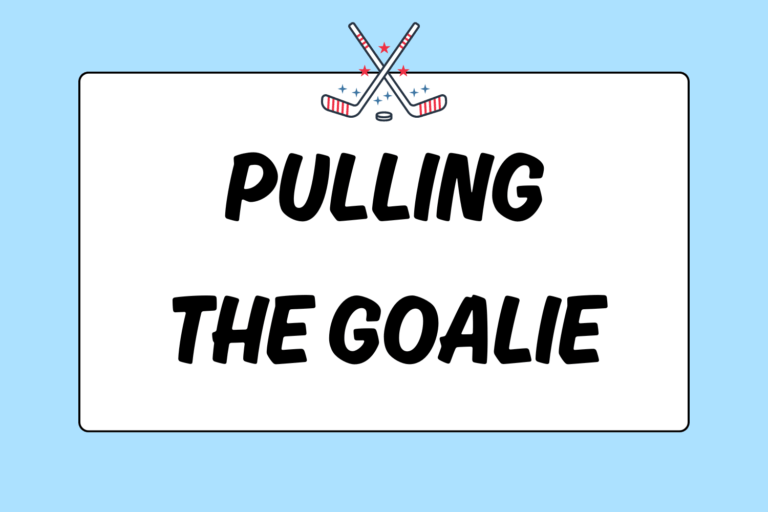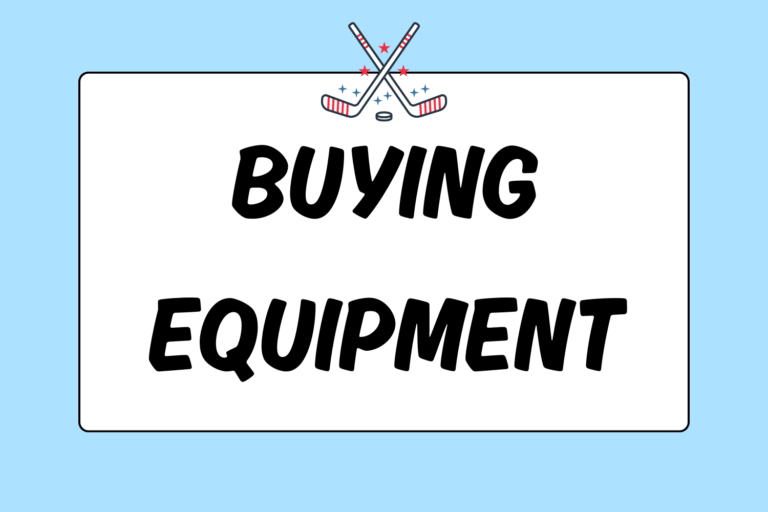Many stat sheets don’t include a column for face-offs. They should. After all, face-offs determine possession many times throughout a game. They are sort of like the battle before the battle, and if you lose the fight too many times, your team will be at a great disadvantage. Mastering the technique for face-offs (also referred to as a draws) takes quickness, toughness and excellent hand-eye coordination.
Yet, for all the difficulty that comes with their job, those who win draws receive very little attention. Most of the focus, especially when it comes to the performance of the center position, is on goal scoring. However, without solid face-offs, there would be less opportunity to score at all, and a truly good center also has to be good at the draw.
For those who like doing the dirty work, here are ten tips to help you win more face-offs:
1. Be a Captain
There are nine specific faceoff dots on the ice and many other spots (along imaginary lines that the referees use to hold the faceoff) where draws can occur. There should be a different plan of attack for each spot and for different scenarios throughout the game.
So while you might not be the official captain of your team, you become the leader of your linemates and defensemen during a faceoff. It is your job to take charge and assume certain responsibilities:
- Tell your teammates where they should be positioned.
- Figure out exactly where you will direct the puck.
- Decide which teammate needs to receive it.
2. Be Aware of Your Surroundings
Once your linemates are in place before the puck is dropped, scan the ice to make a mental note of the situation. Make sure you take in the following details:
- Where each player on the opposing team is positioned. Your opponents will have a game plan of their own. While you can’t know exactly what they have in mind, identifying their stance can help you prepare for their reaction.
- Where on the ice the faceoff is taking place.
- If the boards are nearby.
- If there are any holes or rivets in the ice that may disrupt the movement of the puck.
It is your job to quickly study and remember everything about the faceoff area.
3. Size up Your Opponent
Ask yourself the following questions to get a read on the opposing center:
- Is he right- or left-handed?
- What is his height and build?
- Where is he gripping the stick?
- Who he is looking at or talking to before the puck is dropped?
Use the information to decide the best game plan for the actual draw. The approach you take against a small, quick center might be completely different than one you would take against a center who is big and strong. After a draw against an unfamiliar center, try to remember everything you can about him so that you will know exactly what to expect (and how to prepare) the next time the two of you square off.
4. Size up the Referee
While the actual size of the referee doesn’t matter much, you do want to pay attention to his technique and strictness with the rules. No two refs drop the puck the same way: There are those who will slam the puck to the ice and those who will just drop it. Some even tend to use a little trickery, like faking a drop or making the centers wait extended periods of time for the puck to be released. Technically, the puck is supposed to land flat in the middle of the dot, but that doesn’t always happen.
Figure out how each referee drops the puck and put that info in the memory bank for future draws run by a given official.
5. The Lower the Better
The center on the home team always gets to square up and touch his stick to the ice last. He can adjust his position based on the opponent’s stance, which usually means getting lower and closer to the ice. It is sort of like a game of chess. Just make sure that you are balanced prior to the drop of the puck—you can even use your legs as crutches for your arms to help maintain a low center of gravity.
You also want your grip on the stick to be balanced. Spread your hands apart and position the bottom one just a few inches from the top of the blade. More often than not, you will have to send the puck back to one of your defensemen, and having your bottom hand above the blade will help you guide the puck in that direction. The higher your hands are, the less control you will have on your stick.
The referee will always make sure that the centers are squared up and that their sticks are in the white part of the faceoff dot. Keeping your body balanced and with a low grip on the stick will not only help you adhere to the rules, but also give you an advantage once the puck is dropped.
6. Keep Your Eyes on the Moving Hand
Once your teammates are in position and you are lined up and squared to the opposing center, immediately turn your attention to the puck in the referee’s hand (this is where you revert back to Tip No. 4.). No matter what the ref does – even if he reaches up to scratch his nose with the hand holding the puck – do not take your eyes off his hand until the puck is released.
7. Follow the Bouncing Disc
Not all referees are good at making the puck land flat during a faceoff, and the puck can be difficult to track down since it is made of rubber and has edges. Whereas the pre-drop focus is on the referee’s hand, the post-drop focus should be entirely on the puck itself.
Be prepared to swing and miss the bouncing puck. Taking two or three swipes at it is not uncommon.
8. Learn Some Tricks
The puck hitting the ice is only the beginning of the faceoff. It’s actually rare to win a draw cleanly, and more often than not, there is a brief stalemate between the two centers with both sticks locked above the puck. Plan for the stalemate and be ready to change tactics.
- Use your skates to kick the puck back to a teammate: Once your stick is locked with the opposing center, the faceoff becomes a physical battle. Maintain your low center of gravity and attempt to muscle your opponent away from the puck, then use your skate to direct it to a teammate.
- Immediately go after the opponent’s stick: Instead of swiping at the puck, begin the draw by getting your stick under his and lifting it off the ice. If done quickly, you should have a clear shot at the puck.
9. Be Ambidextrous
Faceoff specialists should be equally adept with their forehand and backhand. Because face-offs go down on both sides of the ice, you won’t always be able to use your strong-hand, and most centers actually find it easier to win a draw with their backhand.
Practice taking draws with your forehand and backhand. If you have time, try switching the stick to different hands (for example, a left-hander would take a faceoff with the right hand positioned at the bottom of the stick). Make sure that if you do use that technique, you are quick enough to get the stick back in the proper hand after the draw.
10. You Can’t Win ’em All
Even the best of the best are going to lose some draws. It is important to have a Plan B when things don’t go as planned. If it looks like you are not going to be able to get the puck away cleanly, try to tie up the opposing center and hold on for reinforcements. There is no shame in having one of your wingers come in to help your team gain possession of the puck.
If you do completely lose the faceoff and the other team gains possession, shake it off and switch to defensive mode.
The Final Draw
Ten tips can be a lot to remember – especially for a part of the game that only takes a few seconds. But the quicker you master these aspects of the draw, the quicker you will realize how much fun it is to be a center who can pass, shoot, and win face-offs!





